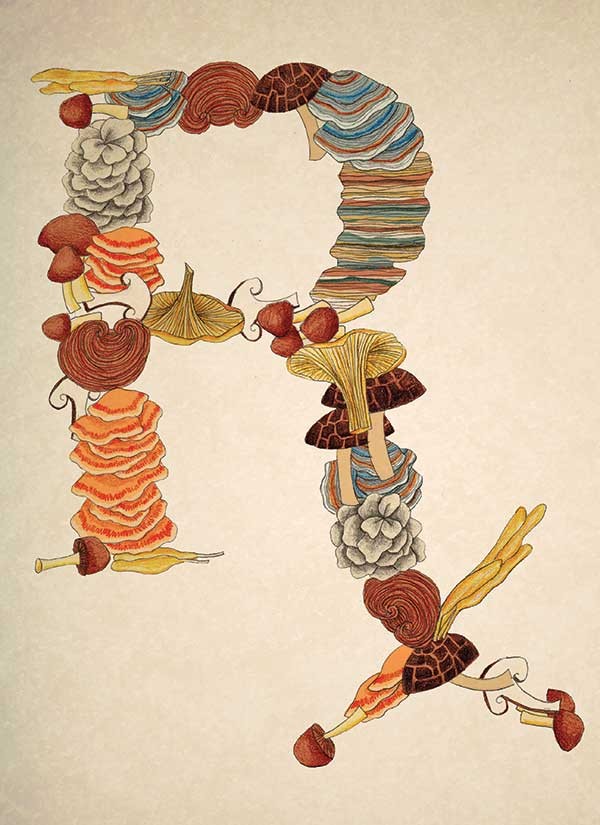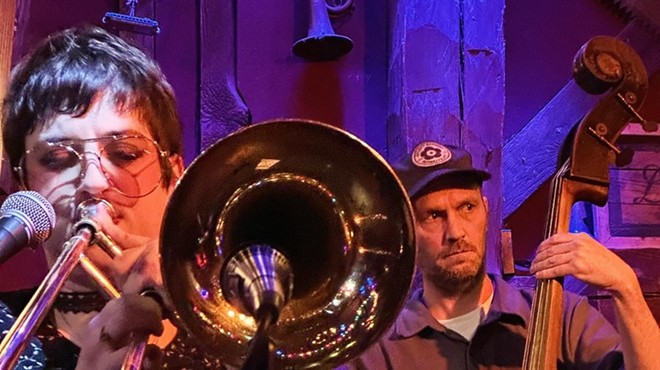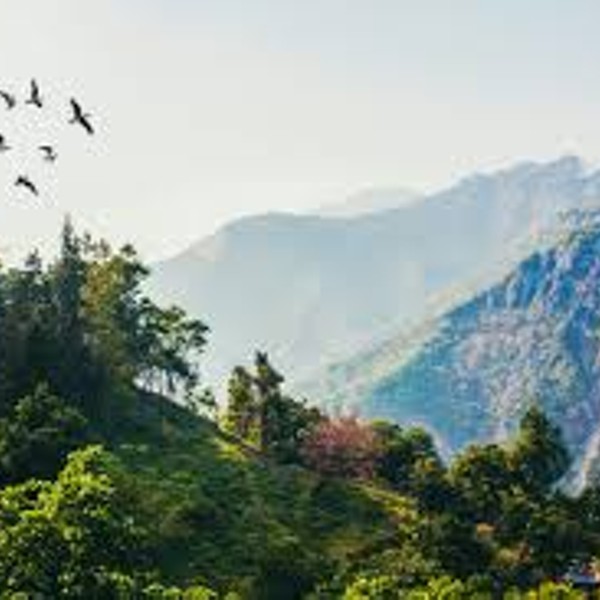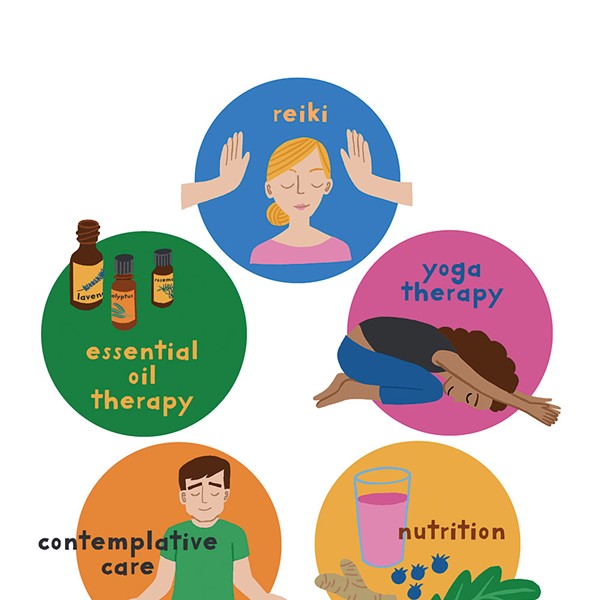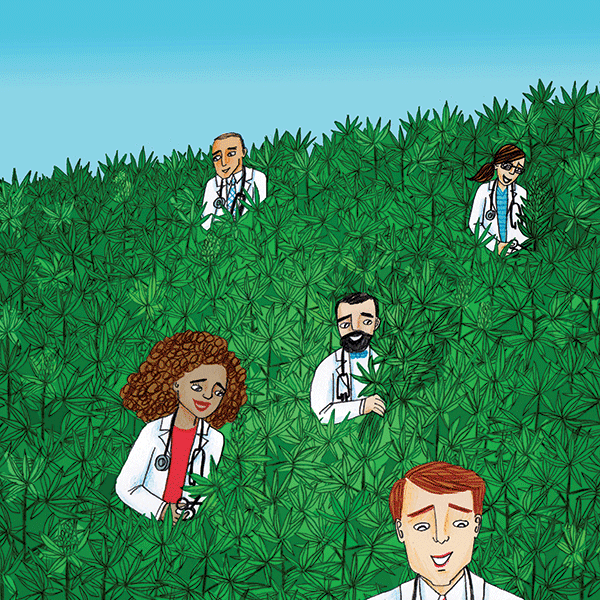The woods of Chichester, off Silver Hollow Road, look like woods to me—but to Larry "Veg Shroomdog" Litt they are one big pharmacy. In this lofty cathedral of ash and hemlock, the medicine we've come to find is mushrooms. Litt—an amateur mycologist and alternative-healing researcher, teacher, and writer—has taken me here with his partner in fungi crime, Eleanor Heartney, primarily to hunt for polypores, the shelf-like mushrooms that grow on trees and are believed to deliver potent medicinal value. At the very least, we might come up with some dinner.
"We're looking for reishi, chicken of the woods, or early maitakes," says Litt as we step into the forest on this late-August afternoon. Because of their antiseptic properties, polypores like these have traditionally been used to dress wounds; some research suggests they can also be antitumor, antioxidant, and anticancer. "If you see four reishis in a summer, that's a good year," says Litt. "It's like finding a parking space in the East Village on a Friday night!" Apparently, the wild variety can go for $300 a pound—but this avid forager doesn't like to take money ("I'd rather trade for flowers, or bad carpentry"). Meanwhile, in the earth under our feet lies a network of mycelium, just one cell wall thick—a diaphanous magic carpet from which the mushrooms grow. "No drug company can take the mushrooms away," says Litt. "The forests could burn down but the mycelium would still be under the ground. After fires and nuclear holocausts, what comes back first are mycelium and mushrooms."
Ancient Wisdom, Modern Promise It was the Ancient Greeks who first identified mushrooms as medicinal; around 450 BCE, the Greek physician Hippocrates classified the amadou mushroom as a potent anti-inflammatory. In 13th and 14th-century Asia, wandering Taoists studied the properties of mushrooms and recorded their medical effects as well. Yet it's not just barefoot herbalists who have found health benefits in mushrooms; modern science, too, has its latex-gloved hands in fungi. Cordycepin, a cancer medication that's now produced synthetically, was originally derived from the cordyceps mushroom. Other fungi offshoots include Cyclosporine, which prevents organ rejection in transplant patients, and the multiple sclerosis medication Gilenya. Recent studies have given strength to the idea that mushroom supplementation can boost the immune system. Yet many mycologists and researchers believe there's still a lot of untapped potential in mushrooms; clinical trials are expensive and often sponsored by a market-driven pharmaceutical industry. It doesn't help that a certain level of mycophobia—fear of fungi—prevails in our culture.
"Mushrooms are ephemeral and not as familiar to us as plants and animals that we see every day," says Paul Stamets, an internationally known mycologist, researcher, inventor, and author based in Kamilche Point, Washington. "Some can feed you, some can heal you, some can kill you, some can get you high. If you're not familiar with something so potent, then the natural reaction is to avoid it." Like mushrooms, Stamets himself is a force of nature; an entrepreneur through his natural-products company Fungi Perfecti, he has written six books, holds more than 7 patents(with more pending), and gives TED talks about how mushrooms can save the world. One of his products, a version of the turkey tail mushroom available in pill form under his Host Defense label, was the subject of a recent $2.2 million phase I breast cancer clinical study funded by the NIH. "The study shows strong statistical significance that on a dose-dependent basis, when you consume turkey tail mushroom mycelium, there is a direct enhancement of the immune system, specifically with natural killer cells and cytotoxic T cells," says Stamets. "These enhance immunity to help keep cancer at bay." One of his favorite stories is about his own mother, who at 84 years old had metastatic stage 4 breast cancer and treated it by complementing conventional Herceptin drug therapy with turkey tail mushrooms; her case has been written up as a best-outcome scenario in medical journals. Four years ago she had been given six months to live. To this day, she's tumor-free.
Close Encounters of the Forest Kind Popular in parts of Europe and Asia, hunting for wild mushrooms isn't exactly an all-American pastime; it's a fringe activity that might gain play among back-to-the-earth types. For Litt, though, 'shrooming is in his blood. On summer vacations out of New York City, his Austro-Hungarian Jewish immigrant grandparents took him foraging in the Fleischmanns area. "They knew which mushrooms would make you sick and kill you, and which ones were edible and really good," he says. "If as kids we picked a bad one, they'd knock it out of our hands." All the years of experience paid off, and Veg Shroomdog seems to sniff out fungi in the darkest of forest corners. Heartney, his consort, is the designated "blade"; she hacks the mushrooms off with a knife and stashes them in a foraging bag. Early on in our hike, we spot tall trees ringed from trunk to tip with polypores—the medicine we've come to find. No need for a close look: Litt has dozens of samples at home in preparation for a course he's teaching this fall on medicinal fungi at the Pratt Institute in New York City. Now it's onward to satisfy our gourmet appetites for mycophagia (mushroom eating).
It's a slow start, but eventually Heartney hits pay dirt with a beautiful beard mushroom that looks like undersea coral. "These are fabulous to eat—a little bit of oil, a little bit of Earth Balance, and you are living the good life," says Litt. Gradually, Heartney's bag fills up with beards, puffballs, and wine-cap stropharia. Along the way, Litt and Heartney point out the poisonous mushrooms—round, harmless looking toadstools that split open to reveal an ominously black interior. Even experts can make mistakes, and the couple has their own foraging war story that landed Heartney in the ER—a puffball error they'll never make again. Mostly they credit their good health to mushrooms and veganism. ("I can't afford to eat meat, because then I'll get cancer or diabetes or heart disease," says Litt. "Every so often I'll have a fish. Fish are seaweed with eyes.")
Just when the foraging excitement is starting to flag, we round the bend to an unexpected sight. "DON'T MOVE!" booms Litt. Suspecting a snake, I do exactly the opposite and start hopping around like the ground is on fire. But what he spots is a small patch of harmless, sunset-yellow mushrooms. "The last chanterelles of summer!" he croons. To this Shroomdog, it's Christmas morning.
My, Oh My, Mycelium Fungi are intriguing, and to many tastes delicious, but the real medicinal powerhouse beneath them lives inside the earth. "Mushrooms are the fruit of the underground network called mycelium," says Stamets, who has devoted much of his career to the study of this natural phenomenon. While mushrooms can come up and produce in four or five days, the mycelium from which they arise can be there for decades or hundreds of years. Stamets credits its survival to a potent immune system that allows it to thrive and sometimes grow to thousands of acres in size. The largest organism on Earth is the mycelial mat in eastern Oregon—2,200 acres and more than 2,000 years old. "It's made up of these threads, about 8 miles of them per cubic inch," he says. "We have five or six skin cell walls that protect us from infection; the mycelial mat has just one. It's surrounded by hundreds of millions of hungry microbes that try to consume it, yet it keeps them at bay. This speaks to the concept of host defense; the organism can stave off competitors to live this long and grand life." Could mycelium be the Earth's own expression of health and wellness?
"We are an ecosystem, we live in an ecosystem, and we are born from an ecosystem. I see it as a continuum—the environment to our own individual health," says Stamets, who writes passionately about environmental remediation in his book Mycelium Running: How Mushrooms Can Help Save the World. Powerful absorbers of toxins, mushrooms may well be nature's vacuum cleaners; they also break down plant tissue to create the soil that gives us life. "The complexity of the species literally under our feet as we walk is critical for human survival. The loss of biodiversity, the loss of soil, the loss of humus, overpopulation, deforestation—this is really unraveling the very fabric of nature that is essential for us to survive." The old-growth forest is one habitat that Stamets is eager to protect. It's here, in the Pacific Northwest, that the uniquely potent agarikon mushroom grows. Stamets's newest patent centers around the antiviral properties of this enormous and extremely rare mushroom. "We had the mycelium of agarikon, the longest living mushroom in the world and growing exclusively in old-growth forests, tested against avian flu viruses and got astonishing results," he says. "From the mycelium, we're finding a whole new repertoire of active constituents that interface and potentiate modern medicine in unexpected ways."
Power to the Mushroom Drinkers Back at Litt's house, he's just brewed a pot of reishi tea, which he warns me in advance might offend my palate: "It tastes ooky, but I believe ookiness is good." After such a lead-in, I'm pleasantly surprised to enjoy the earthiness of the reishi, which he had foraged himself, dried in a dehydrator, and crushed into powder for the brewing of this healing tea. From it comes the long list of polypore mushrooms' potential health benefits—but Litt steers clear of magical cure-all talk. "We have the option not to drink this," says Litt. "We can just go to the doctor and get pills. We don't know what the reaction to medication is going to be for a person's particular anatomy, but no one has died from reishi tea. You have to have faith, as with all medicines, scientific and otherwise. Why not try this, too, on top of Pilates?"
Yet science does support the mushrooms, particularly their biological compounds of beta glucans, polysaccharides, and glycoproteins. All of these have health benefits that seem to work in concert, making a good case for a whole-food approach to fungi. "I think people should eat mushrooms at least three times a week, and at least three different species," says Stamets, who likes to cook shiitake, maitake, and lion's mane. "Mushrooms are fabulously rich in nutrition: They can have up to 40 percent of protein, can be a great source of fiber and vitamin D, and have virtually no cholesterol and less than 5 percent fat." Portobello burger, anyone?
For Litt, mushrooms are about self-reliance. "We live in an era where corporations want us to rely on them, and I want to do the opposite. I want to rely on myself and the forest—myself and the knowledge I can get from history and traditional medicine. And what I've discovered is that, at 67 years old, I can live pretty well. I can be a pretty healthy geezer."







